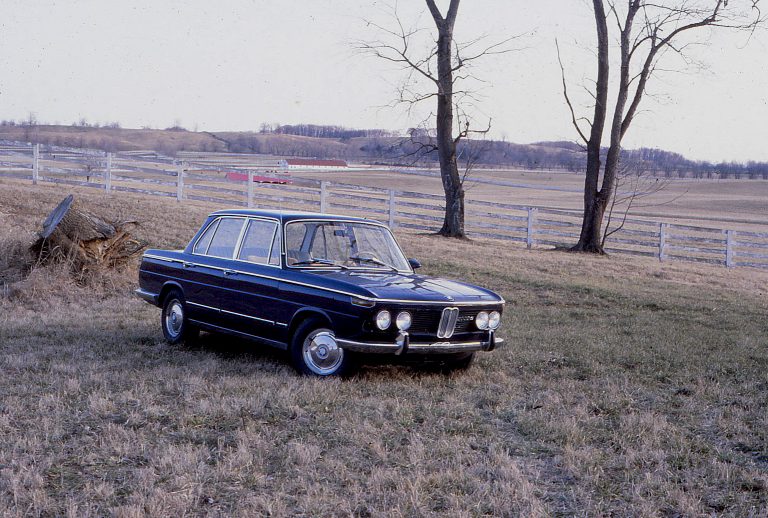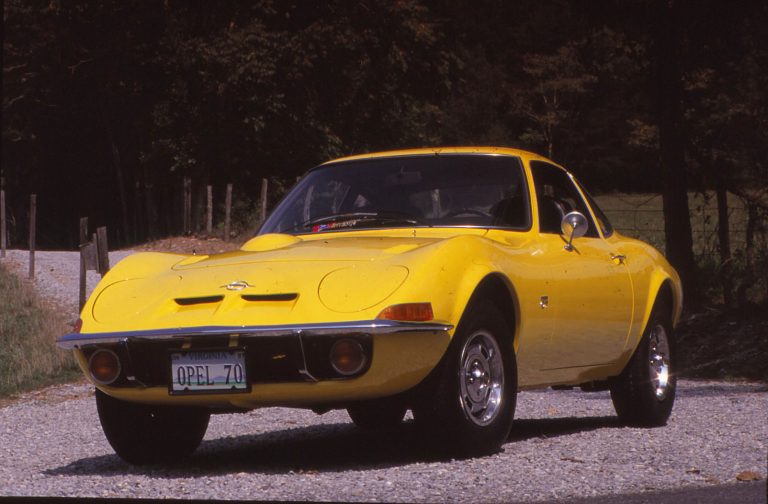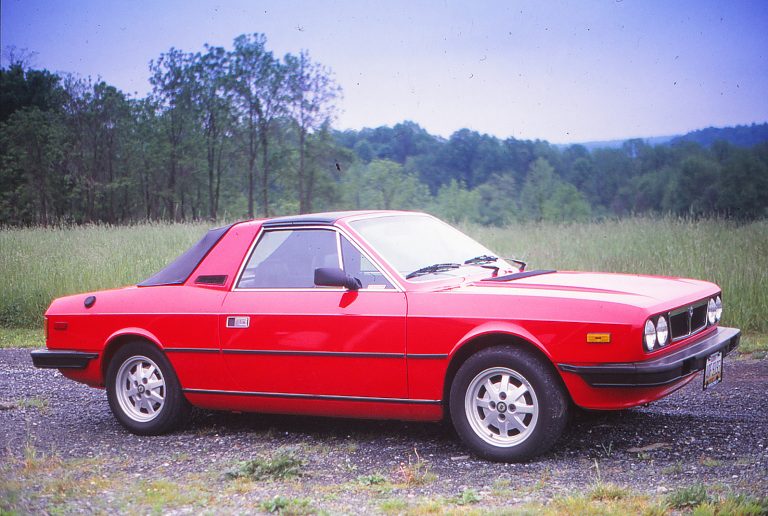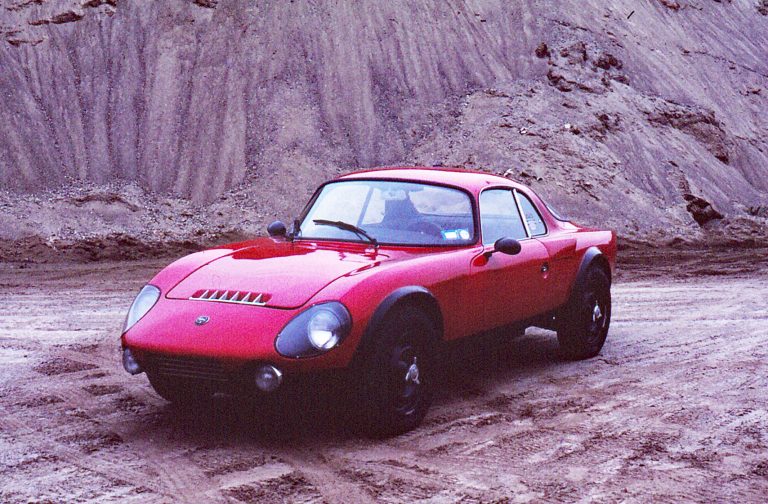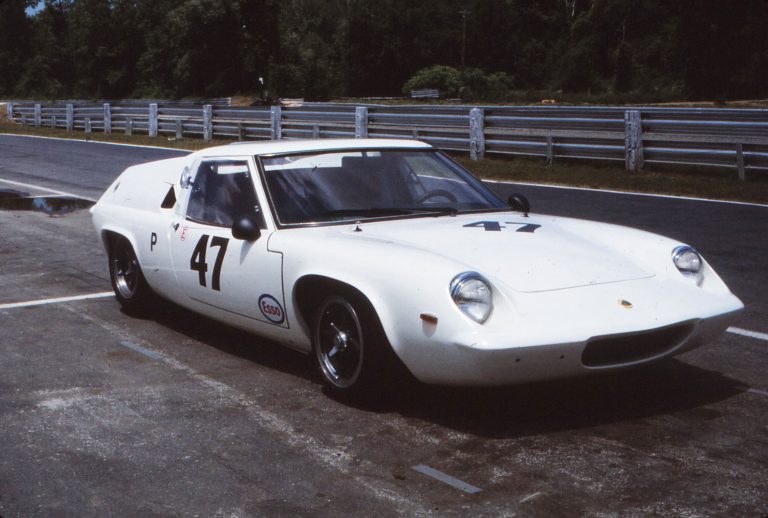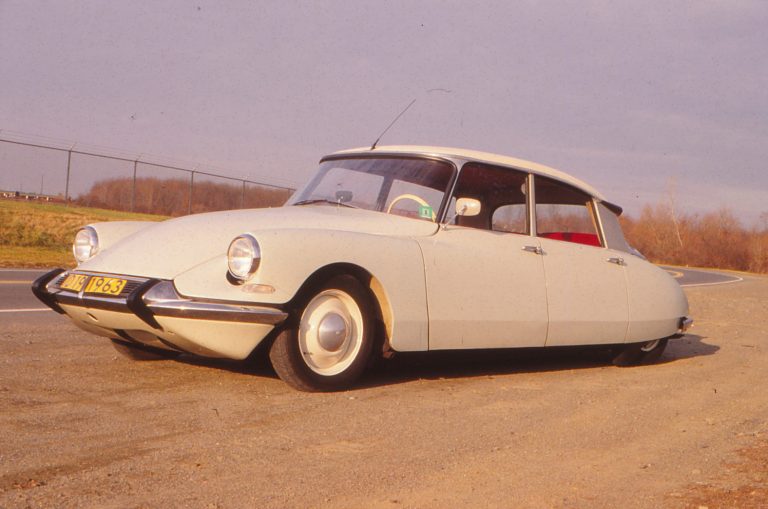History/driving impressions originally published in AutoWeek December 2, 1985
The little car growls over the upgrade, barking at the up shifts, snapping at the down, its odd syncopated exhaust blatting in 4/4 time, echoing off walls built by Italian stonemasons almost 100 years ago, ringing off tree trunks that were there when the walls were built. The liter-and-a-half of Lancia V-4 is working its magic, hurtling the poppy red Mediterranean projectile under a canopy of green, along a cracked and patched concrete highway just outside Brewster, N.Y., In that southeastern part of the state that is almost Connecticut. I am almost alone on the road, except for young boy watching from a driveway on his bicycle and a road crew of Bruce Springsteen types whose daydreams of Chevrolets and Harleys are interrupted by the Lancia’s snarl. It gets their attention, not their interest.
If only they knew. If only they really understood. This is a car that challenged Porsche and Saab, Ford and Opel, Gordini and Cooper. All the rally greats of Europe. This is the car that won every major rally in Europe at least once, that finished second in the East African Safari Rally, an event which to finish alone is an accomplishment.
This is the World Rally Champion. This is the Lancia Fulvia 1.6 HF.
But this car is as unknown in the U.S. as the names of those who drove it through some of the most demanding conditions: Leo Cella, Sandro Munari, Ove Anderson, Harry Kallstrom. These are not names bandied about American water coolers. These are hard-core names.
But the Fulvia 1.6 HF is hard-core, even among Lancias. Even among Fulvias.
The first Fulvia appeared in 1963, the Berlina 1C, with a 1091cc, 58-HP V-4. Like the earlier and larger Flavia, it had front-wheel-drive, four-wheel Dunlop disc brakes and a double A-arm front suspension with a transverse leaf, while a dead axle with a pair of leafs held up the rear. Its styling was typical Italian sedan – which is to say, on the funky side of sober. Upgraded and modernized, versions of the Berlina survived until 1972.
The Berlina was followed by a coupe version, first appearing in the 1965 Turin Motor Show, and about the same time the Fulvia Zagato debuted its unusual profile.
The HF came almost a year later. Powered by a specially tuned 1216cc engine producing 88 HP, the 1.2 HF had plexiglas windows, no bumpers and minimum trim to save weight. The HF designation was derived from HF Squadra Corse, the race team that was begun in 1963 as a private effort, becoming the official works team in 1965. In addition to road races, the team competed in rallies with Flavia coupes and Sports and achieved notable success, including a collection of firsts in international events.
The success of the HF Quadra Corse as a non-factory launcher team was largely responsible for the company’s return to competition. When the cement industrialist Carlo Presenti bought the financially ailing Lancia firm in 1956 and sold the Lancia Grand Prix cars to Ferrari, racing was dead at Lancia. The appointment of Antonio Fessia, a brilliant engineer but no fan of racing, put a further chill on competition activities, causing the equally brilliant but racing-oriented Vittorio Jano to sign on with Ferrari.
But the Fulvia HF was one for the racers. Attention to weight savings gave it a curb weight of 1850 pounds, some 200 less than the standard coupe. The performance wasn’t up to the competitions, and the 1.2 HF was discontinued in 1967, replaced by the 1.3 HF. To accommodate the change in bore and stroke, the angle of the vee was decreased – but by less than a degree. The new 1298cc engine was used in all Fulvia models, but in the HF it produced 101 HP, with race-tuned versions making as much as 122 HP at 7500 RPM.
Despite victories and excellent placings, work was begun on yet a larger version of the V-4. As with all Fulvia engines, the cylinder block was cast-iron but with the crankshaft running in a separate light alloy crankcase. There was a single head spanning the vee with a pair of overhead camshafts driven by a duplex chain The combustion chambers were hemispherical, with valves set at 60 degrees. Interestingly, the water pump was driven not by the fan belt, but by the timing chain, providing coolant flow even with a broken belt.
The engine was installed longitudinally canted to the left about 45 degrees, with carburetors on the right side of the engine and exhaust exiting on the left and under. Driving the front wheels, the engine is hung out front similar to today’s Audi, with transaxle behind the axle line. A five-speed came standard with the 1.6 HF. The entire drive unit was mounted on a subframe which bolted to the unit body.
The engine came in two stages of tune. The standard produced 115 HP, but the optional “variante 1016” employed two Solex C 45 DDFH carbs, more radical cams, and an 11.3:1 compression ratio to produce 132 HP at 6600 RPM. A radical bored-out hillclimb car defined the outer envelope of power output with 161 HP.
Lancia was a narrow-angle V-4 pioneer. Read about the Lancia Lambda here.
The 1.6 HF was recognizable by its fender flares and oversize central headlights in the grill, known in Italian as “Fanalone.” With competition now firmly in mind, more than a half-dozen axle ratios were available, along with optional gear ratios, lightweight body parts, and larger fuel tanks. This is the car that would become Lancia’s standard-bearer in rally competition and would win, even before the Stratos, the World Rally Championship for Lancia.
The 1.6 HF was produced nominally in 1968 and 1969 only, during which 1280 examples were built. It was replaced by the Fulvia 1600 HF Lusso, which was built in several commemorative versions after rally successes, but being more civilized and therefore heavier, it was not as hot as the purpose-built 1.6.
Of course, Italians do things a little differently than everyone else, and though production of the 1.6 HF “ended” in 1969, at least one was built in 1970. That car now belongs to the president of the American Lancia Club, Armand Giglio of Brewster, New York. It does not have Fanalone headlights, these having been replaced by standard units, but otherwise it’s all 1.6 HF, hot engine and all.
The seatbacks are nicely bolstered, offering a lot of lateral support, and a thick-rimmed Ferrero steering wheel has some of the Italian tilt to it, but nothing that cannot be tolerated. First gear is back and to the left, racing style, and the gear lever itself angles back, like in an Alfa but not as severe. Behind the front seats, there is either a large cushioned parcel shelf or a small and hard backseat. Take your pick. On the dash are a large 220-KPH (136 MPH) speedometer and 7000 RPM tach flanking a smaller trio of fuel, coolant temperature and oil pressure gauges with a series of warning lights below them. An oil temp gauge lies over to the right.
With the big carbs, a quick start requires clutch-slipping to get away without bogging the engine, and acceleration means keeping the tach wound up. But that’s all right, because the engine loves it. It never sounds thrashy or rough, and it has that light flywheel feel that makes you wish the transmission wasn’t synchro so double-clutching would be really necessary. Although it is going into second gear. A classic weakness of the Fulvia transaxle is a weak second gear synchro, and Giglio’s is no exception.
At speed on a rough road the suspension is squishy-firm; it’s loose over the bumps but seems to hold on all the better. It floats over the pavement, grabbing at bits that offer themselves up. Like a boxer it dances, alert, armed and dangerous, ready to go in any direction but completely under control. There is so little “front-wheel-drive feel” – torque steer is virtually absent – that you’re tempted to get out and look for driveshaft to the rear.
Flashing through a dappling of sunlight, growling, snapping and barking, cutting and thrusting, shifting up and down, the Lancia Fulvia 1.6 HF is in its element. Lucky indeed is the individual in the Lancia Fulvia 1.6 HF.
The narrow-angle V-4 is an oddity, and even the V-4 itself is unusual, with the Ford Taunus being one that was produced in volume, used in Ford vehicles and as a replacement for the three-cylinder two-stroke Saab. But that engine had a 60-degree enclosed angle which would be common in V-6 engines.
The narrow-vee, however, was almost exclusive to Lancia. “Almost” because Volkswagen used it extensively in the VR-series engine, in production as the VR6 in 1961 and introduced in the US in 1962. VW expanded on the 15-degree vee by doubling up on it, creating a double-vee—or as VW called it, a W) with essentially two 15-degree V-4 engines combined into a 72-degree vee for a W-8. Volkswagen then doubled down on doubling up by creating a W-8 for the Passat, and a W12 that was used in the Volkswagen Phaeton, Audi A8 and Bentley Continental.. A W-16 was used in VW Group’s Bugatti Veyron and Chiron, with a displacement of 8.0-liters and four turbo chargers and an included angle of 90 degrees between the two 15-degree vees.
And oddball narrow-angle V-4, however, is was made by a French company, Ariès, in 1907 or 1908.Although Ariès continued making cars into the Thirties, the narrow-angle V-4 did not. Only the Volkswagen Group and Lancia made a substantial number of the engine type.










